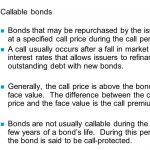Adjusting Entries for Uncollectible Accounts Chron com
Adjusting Entries for Uncollectible Accounts Chron com
Content
When this bad debt is written off, the allowance for doubtful accounts is credited by the write-off amount. If, however, a company uses the direct write-off method, it will credit accounts receivable to write off the bad debt. Because the time difference between the sale and the time a company realizes an account is uncollectible is usually long, using the direct write-off method will violate the matching principle. Uncollectible accounts receivables require not one, but a series of adjusting entries to ensure that the financial statements properly reflect the current financial condition of a business and uncollected sales from customers.
- When a company sells on credit, it is essentially lending the client the funds to purchase the goods.
- With this method, you can group your outstanding accounts receivable by age (e.g., under 30 days old) and assign a percentage on how much will be collected.
- However, financial accounting does stress the importance of consistency to help make the numbers comparable from year to year.
- There is one more point about the use of the contra account, Allowance for Doubtful Accounts.
- See immediately preceding endnote for other reasons as to why these balances can differ.
Under the allowance method, every bad debt write-off is debited to the allowance account and not to Bad Debt Expense. The credit balance in the allowance account will absorb the specific write-offs when they occur. Unless bad debt losses are insignificant, the direct write-off method is not acceptable for financial reporting purposes.
Business Operations
When you create an allowance for doubtful accounts, you must record the amount on your business balance sheet. Allowance for doubtful accounts falls under the contra-asset section, which means it will either journal entry for estimated uncollectible accounts be zero or negative. It is usually added to the total accounts receivable to give the net AR value. A company’s allowance for doubtful accounts is directly proportional to its day sales outstanding .
The entry made in writing off the account is reversed to reinstate the customer’s account. Cash realizable value in the balance sheet, therefore, remains the same. Bad debts expense will show only actual losses from uncollectibles. When a specific account is determined to be uncollectible, the loss is charged to Bad Debt Expense.
How can HighRadius help reduce the number of doubtful accounts?
The president thinks that the lower net income, which reflects a 6% growth rate, will be a more sustainable rate for Marvin Company. In some cases, you may write off the money a customer owed you in your books only for them to come back and pay you. If a customer ends up paying (e.g., a collection agency collects their payment) and you have already written off the money they owed, you need to reverse the account.

Collection AgencyA collection agency refers to a firm engaged in the recovery of the default loans or dues from the borrowers on behalf of the lenders or creditors. A loan provider or creditor outsources its debt-collection function to such a third party to reduce bad debts. Credit SalesCredit Sales is a transaction type in which the customers/buyers are allowed to pay up for the bought item later on instead of paying at the exact time of purchase. It gives them the required time to collect money & make the payment. Accounting JournalAccounting journal, often known as the book of original entry, is first used to record the company’s accounting record whenever a financial transaction occurs.
What is the journal entry for uncollectible accounts?
To “write off” an account under this method we use the following journal entry: DR: Bad Debt Expense (for the amount uncollectible). CR: Accounts Receivable (for the amount uncollectible). This journal entry gets rid of the expectation that we will receive these funds and records this amount as an expense.

